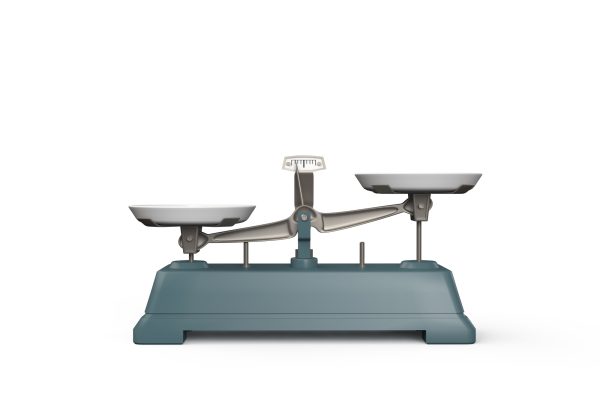The Market Has Rallied Huge. What’s Next?
COVID-19 continues to wreak havoc, as cases spike throughout the country during this holiday season (chart below). California, responsible for about 15% of US GDP, has recently issued the widest and most restrictive stay-at-home orders. Hospitals throughout the country are running out of ICU beds available for COVID-19 patients. And yet the S&P 500 and the Russell 2000 have made new all-time highs this past week and the 10-year Treasury yields just 0.88%. We see stocks as anticipating a recovery, even as bond yields are depressed by Fed policy.
The markets are never easy. You can often make arguments for and against then-current market levels, and this time is no different. Since the end of October, the S&P 500 and the Russell 2000 have rallied about 12% and 25%, respectively. This is largely due to the vaccine news. Hopefully, by the second- and third-quarter of next year, the virus’ spread will be in its waning days or over. Economic activity should pick up from current levels. People will travel. Fall football should have real fans and full stadiums. Bars and restaurants should thrive. This year’s Thanksgiving to New Year’s holiday season sacrifice, with reduced family get togethers and the loss of holiday parties, will be worth it once we get to the end of this pandemic.
Some of the data supporting the economic recovery rally that we’re seeing in equities is evident in the demand for industrial metals, agricultural grains, and the activity in the ports. Copper is often referred to as Dr. Copper due to its ability to predict turning points in the global economy – it’s up nearly 66% since late March. Iron ore prices are up 99%. Demand from China for soybeans, corn, and sorghum is leading to a rally in grain prices. And the Ports of Los Angeles and Long Beach are backed up and working at full capacity. In October the Port of Long Beach had its busiest month in its 109-year history (metals, grains, and ports charts below).
It must also be noted that the Fed’s actions and the various fiscal stimulus programs have been unprecedented and very effective at stabilizing the economy. The S&P 500 is up 15% year-to-date. In late March, the thought that the S&P could be up this amount as we approach year-end was almost laughable. The Goldman Sachs Financial Conditions Index, which takes into account riskless interest rates, exchange rates, equity valuations, and credit spreads, is at its all-time best level – financial conditions have never been better in its 30 years of history (chart below). Another good barometer for the health of the economy is to look at the high-yield corporate bond market. The Bloomberg Barclays US High-Yield interest rate is also at an all-time low (chart below). And Citi’s index of stocks that benefit from increasing inflation versus those that benefit from low inflation clearly shows the inflection since late October (chart below). The point of all of this is that the reflation trade is winning and the stay-at-home, defensive positioning trade is underperforming.
With all of that being said, the stock market looks to be a bit overly optimistic on the outlook in the short-term at least. Bullish sentiment as seen in the CBOE Equity Puts-to-Calls ratio is at its lowest in twenty years (a low level of puts-to-calls implies a bullish reading, chart below). And the S&P 500 is quite extended to its 200-day moving average – the most in the last five years (chart below). We should see this gradually move closer to the 200-day as the graph would seem to imply. But while investors are optimistic on stocks, why is the 10-year Treasury still under 1.00%? You could argue that this is in part due to the Fed’s monthly purchases of $80 billion in Treasuries – which helps to keep a lid on this most important interest rate. And there’s the possibility that the Fed will extend the weighted average maturity of its Treasury holdings at its FOMC meeting on Dec 16th. But you could also say that the market is in effect not overly convinced that economic growth is going to be robust enough to lift the 10-year back to pre-pandemic levels of about 1.90%.
The thing to keep in mind in regards to the outlook for next year is that the pandemic was obviously a global pandemic and consequently the monetary and fiscal responses that are occurring globally are all happening at the same time. This is critical, because it implies a globally synchronized recovery in 2021 as the vaccine gets distributed widely. This should provide a positive backdrop for US equities. Current prices reflect some of the economic recovery that we should see next year as we start to get past this virus. Perhaps the current bullish sentiment mentioned above suggests that the market has gotten a little extended. But remember that not all stocks have risen to the same degree as the Index, and many cyclical stocks remain down by upwards of 15% year to date. Moreover, if we see the hoped-for new round of fiscal stimulus—either this year or early next—it could be the bridge that gets us through to the distribution of the vaccines in large numbers and to a wider economic recovery.
1. Covid-19 cases in the US and California
2. Bloomberg Industrial Metals Subindex
3. Bloomberg Grains Subindex
4. LA and Long Beach Ports Total Containers Activity
5. Goldman Sachs Financial Conditions Index
6. Bloomberg US Corporate HY Yield-To-Worst
7. Citi’s stocks that benefit from inflation relative to stocks that don’t
8. CBOE Weekly US Put-To-Call Volume Ratio
9. S&P 500 Index (the white line is the current price, yellow is the 200-day Moving Average
About the Author
Paul Broughton
Paul Broughton is an equity portfolio manager with ACM. Prior to joining the firm, he was a co-manager of the Salient Dividend Signal Strategy® portfolios. Prior to joining Salient in 2010, Paul held various roles in fixed income portfolio management…
About the Author



LATEST ARTICLES